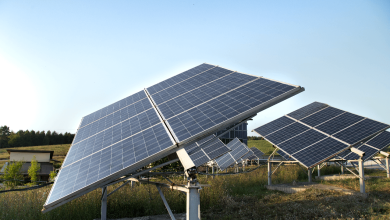World Future Energy Summit: A Comprehensive Overview

The Summit’s Essence
The World Future Energy Summit is a key event in the global sustainability calendar, bringing together leaders and experts to foster the transition to clean energy. Hosted by Masdar in Abu Dhabi, it serves as a strategic platform for discussions and decisions on future energy and sustainability.
UAE’s COP Presidency
The UAE’s COP Presidency has been pivotal in driving significant agreements and setting ambitious climate and energy goals. The country’s leadership role was particularly evident during COP28, where it brokered substantial agreements and demonstrated a commitment to leading the charge against climate change.
Amplifying COP28 Consensus
The summit aims to build on the COP28 Consensus, which includes commitments to transition away from fossil fuels and to triple renewable energy capacity by 2030. It also emphasizes doubling energy efficiency improvements and substantially reducing methane emissions.
Boris Johnson’s Opening Statement
Former UK Prime Minister Boris Johnson delivered a compelling opening statement at a previous COP summit, likening the urgency of climate action to a “doomsday device” scenario. His words resonate with the summit’s call for urgent and collective efforts to combat climate change.
The summit opened with a collective call for collaboration on the ‘Pathway to 1.5°C’, stressing the need to limit global warming to prevent catastrophic climate change. This initiative highlights the importance of actionable plans to achieve this critical goal.
Financial Mobilization for Climate Goals
A significant focus of the summit is the mobilization of global finance to meet climate goals. Discussions are centered around scaling up investments to keep global warming below the 1.5°C threshold, requiring large-scale financial commitments.
Recent Agreements
Since the summit’s commencement, there have been substantial agreements, including commitments to triple renewable energy capacity and double energy efficiency improvements by 2030. These agreements are pivotal in advancing the agenda set during COP287.
Here are some of the key highlights:
- Global Stock Take (GST): The first ever GST concluded with a call for nations to transition away from fossil fuels.
- Energy Infrastructure: A massive build-out of new energy infrastructure is needed, with an estimated total investment of $4.5 trillion by 2030.
- Renewable Energy: 117 countries agreed to triple global renewable energy capacity by 2030, reaching over 11,000 GW.
- Energy Efficiency: There’s a global target to double the rate of energy efficiency improvements by 2030.
- Low- and Zero-Emission Technologies: Countries are encouraged to accelerate the development of technologies like carbon capture and storage.
The World Future Energy Summit is more than an event; it’s a catalyst for sustainable change. It’s where the world’s energy agenda is shaped, and commitments made at COP28 are transformed into actionable strategies for a sustainable future.
Read More: Can ‘COP presidencies troika’ deliver on the ambition needed to tackle climate change?



